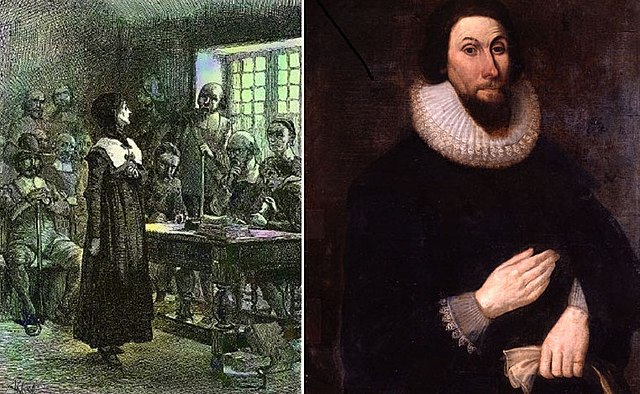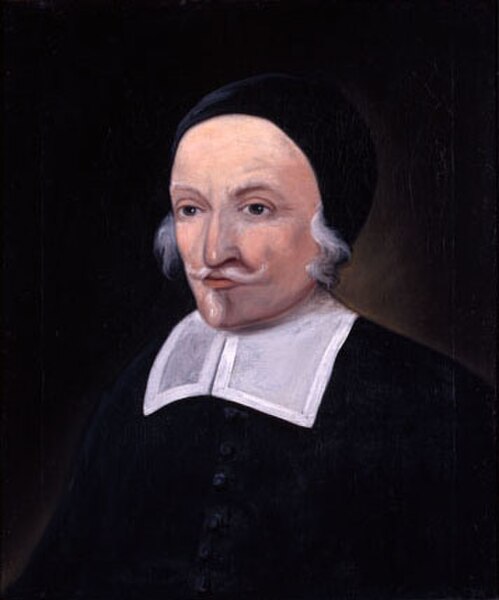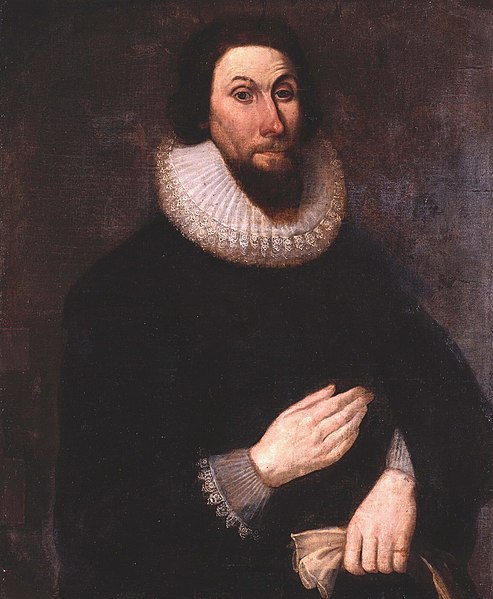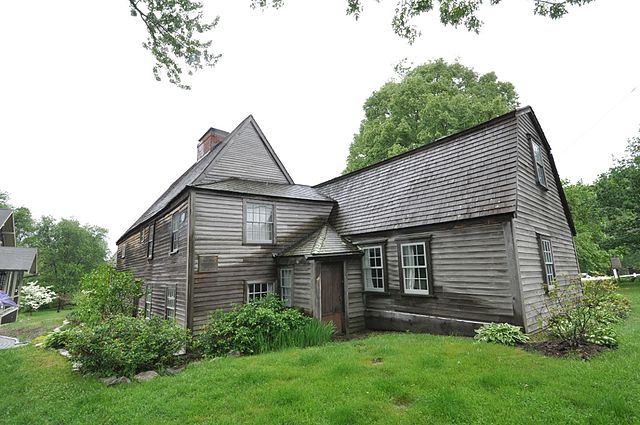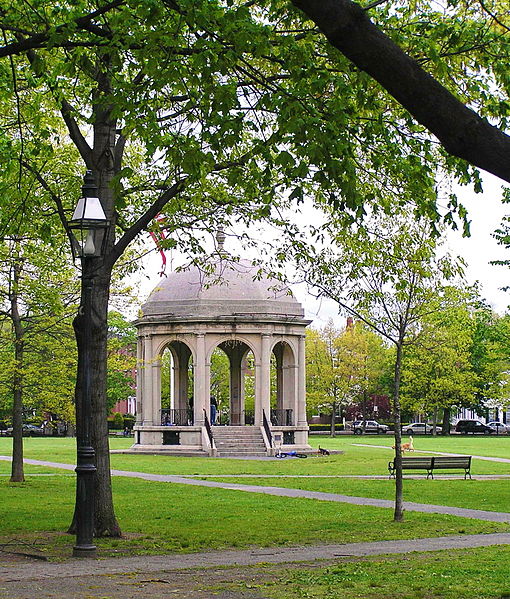The Antinomian Controversy, also known as the Free Grace Controversy, was a religious and political conflict in the Massachusetts Bay Colony from 1636 to 1638. It pitted most of the colony's ministers and magistrates against some adherents of Puritan minister John Cotton. The most notable Free Grace advocates, often called "Antinomians", were Anne Hutchinson, her brother-in-law Reverend John Wheelwright, and Massachusetts Bay Governor Henry Vane. The controversy was a theological debate concerning the "covenant of grace" and "covenant of works".
Anne Hutchinson at trial and John Winthrop
John Cotton was Hutchinson's mentor.
Henry Vane the Younger
John Wheelwright's fast-day sermon fanned the flames of the controversy.
The Massachusetts Bay Colony (1628–1691), more formally the Colony of Massachusetts Bay, was an English settlement on the east coast of North America around the Massachusetts Bay, one of the several colonies later reorganized as the Province of Massachusetts Bay. The lands of the settlement were in southern New England, with initial settlements on two natural harbors and surrounding land about 15.4 miles (24.8 km) apart—the areas around Salem and Boston, north of the previously established Plymouth Colony. The territory nominally administered by the Massachusetts Bay Colony covered much of central New England, including portions of Massachusetts, Maine, New Hampshire, and Connecticut.
John Winthrop, who led the first large wave of colonists from England in 1630 and served as governor for 12 of the colony's first 20 years
Constructed in 1641, the Fairbanks House is a First Period home with clapboard siding
Salem Common was established as a village green in 1667
Quaker Mary Dyer was hanged on Boston Common in 1660

